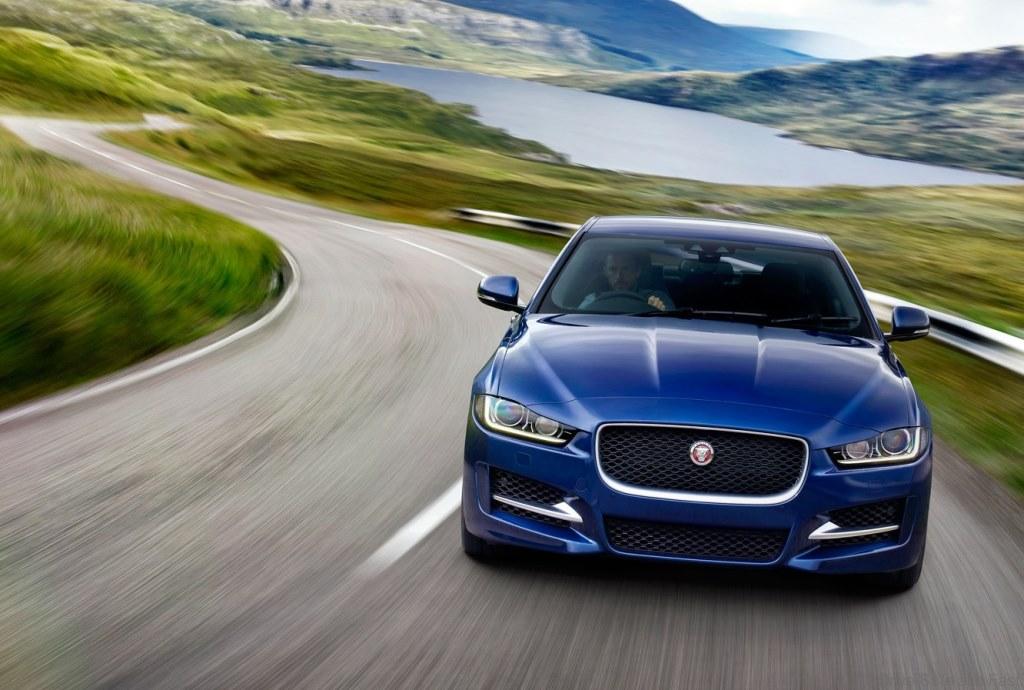The Jaguar XE is an all new product with the most sophisticated chassis of any vehicle in its class and sets the benchmarks for ride and handling: it is a true driver’s car. Where most competitors use MacPherson strut front suspension, Jaguar’s vehicle dynamics team insisted on the superior double wishbone configuration. The aluminium front knuckles are as light as they are stiff and are forged from cast blanks using a patented production process.
Conventional multilink rear suspension couldn’t deliver Jaguar’s dynamics targets. The solution was Integral Link: a system usually found only in larger, more expensive vehicles and which delivers the ideal lateral and longitudinal stiffness values needed for the XE’s precise handling and supple ride. Aluminium has been used extensively, minimising weight.
Electric power steering (EPAS) offers incredible tuning potential and greater energy efficiency than traditional hydraulic systems but Jaguar’s engineers have not considered the technology sufficiently mature – until now. Prototype development using larger vehicles convinced the dynamics team that the best EPAS technology could now deliver the advantages of fuel consumption reduction without any loss of feedback through the steering wheel. The XE is the first Jaguar to use EPAS. As well as reducing CO2 emissions by up to three per cent, the system offers the performance that Jaguar’s engineers demanded.
“The introduction of electric power steering was a big step but one we were able to take confidently. The almost infinite range of possibilities it provides in fine tuning has enabled us to achieve the responsive, connected steering feel we require in a Jaguar – without compromise.” Mike Cross, Chief Engineer, Vehicle Integrity, Jaguar
Active safety: Intelligent technologies to support the driver
The new XE’s light, stiff bodystructure has been engineered to meet the most demanding legislative and consumer crash test requirements worldwide. Complementing the outstanding levels of protection it offers is a suite of advanced driver assistance systems designed to help and support the driver, making every journey safer, more relaxing and even more enjoyable.
The XE is the first car in the world to be equipped with All Surface Progress Control (ASPC). This all-new system, developed with the input of decades of Jaguar Land Rover experience in off-road traction systems, works like a low-speed cruise control. ASPC functions between 3.6km/h and 30km/h: by precisely controlling the brake system and the powertrain it delivers optimum traction in the most slippery conditions without skidding and without the driver using the pedals.
Projecting high-contrast colour images onto the windscreen, the laser head-up display (HUD) technology provides the driver with information such as speed and navigation instructions with maximum clarity and minimum distraction. As well as superb image quality, the laser HUD is smaller and almost a third lighter than existing systems. Jaguar is one of the first manufacturers in the segment to use stereo camera technology. This state-of-the-art sensor is the ‘eyes’ of the XE’s autonomous emergency braking system, providing highly accurate measurements of speed and distance of objects ahead, and can initiate full braking to avoid or mitigate a collision.
The stereo camera performs traffic sign recognition and lane departure warning functions too. The XE also offers systems such as adaptive cruise control, closing vehicle sensing, blind spot monitoring, semi-automated parallel and bay parking, and reverse traffic detection.








